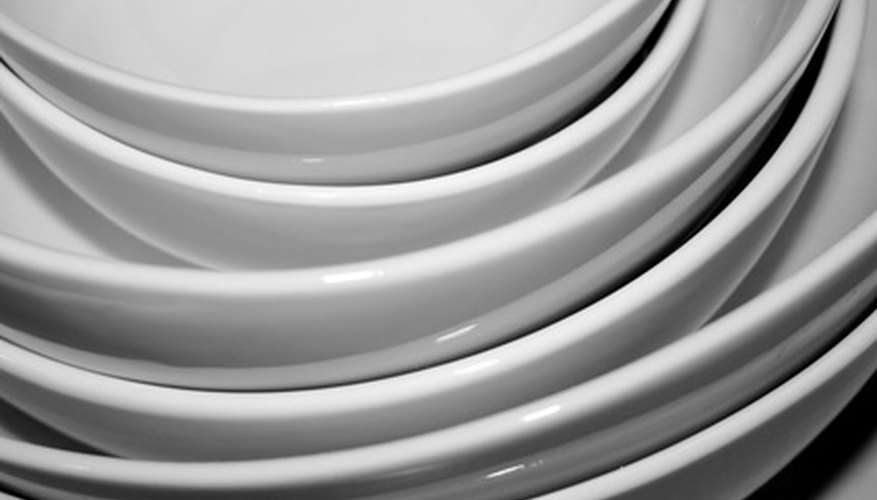Many people choose dinnerware and china based upon appearance, which is understandable, but not always practical. Not all dinnerware is created equal, and some materials might not be the best choice for your particular lifestyle. Learning the differences between earthenware, stoneware and ironstone helps buyers make smarter decisions when it comes to choosing the dinnerware that will become a big part of their daily lives.
Stoneware
Stoneware is dense, non-porous dinnerware that's named for its stonelike colouring. After stoneware has been fired, the finished product often appears variegated like natural stone. Stoneware is tough enough to withstand the heat of microwave and regular ovens. Dinnerware made from stoneware is very tough, hard to break, and heavy in the hands. Usually, stoneware is sold in natural, earth tones.
- Stoneware is dense, non-porous dinnerware that's named for its stonelike colouring.
- Dinnerware made from stoneware is very tough, hard to break, and heavy in the hands.
Earthenware
Earthenware is usually painted and glazed before it's sold, because it is naturally porous and prone to soaking up liquids. Because earthenware is often hand-painted, it's available in a wide variety of designs. Earthenware is fired at low temperatures, which makes the colours very bright and vivid. Derived from clay, earthenware has been used for functional and decorative purposes for centuries.
- Earthenware is usually painted and glazed before it's sold, because it is naturally porous and prone to soaking up liquids.
Ironstone
Ironstone is a type of stoneware, though it's made to be somewhat lighter and less dense. Originally, ironstone was created as a stronger alternative to porcelain, and it will withstand the heat of microwave and conventional ovens. Ironstone can even be placed in a dishwasher.
Differences
Stoneware is always heavy and dense by nature, while earthenware can be made very thin and lightweight. Unlike earthenware, stoneware is non-porous and it isn't necessary, that it be glazed to protect its surface. Earthenware is fired at low temperatures, and it might not always be impervious to the heat of the microwave oven, though stoneware and ironware are. Stoneware and earthenware can be styled to show off their natural characteristics, while ironware is often painted and glazed to look more refined.
- Stoneware is always heavy and dense by nature, while earthenware can be made very thin and lightweight.
- Stoneware and earthenware can be styled to show off their natural characteristics, while ironware is often painted and glazed to look more refined.
